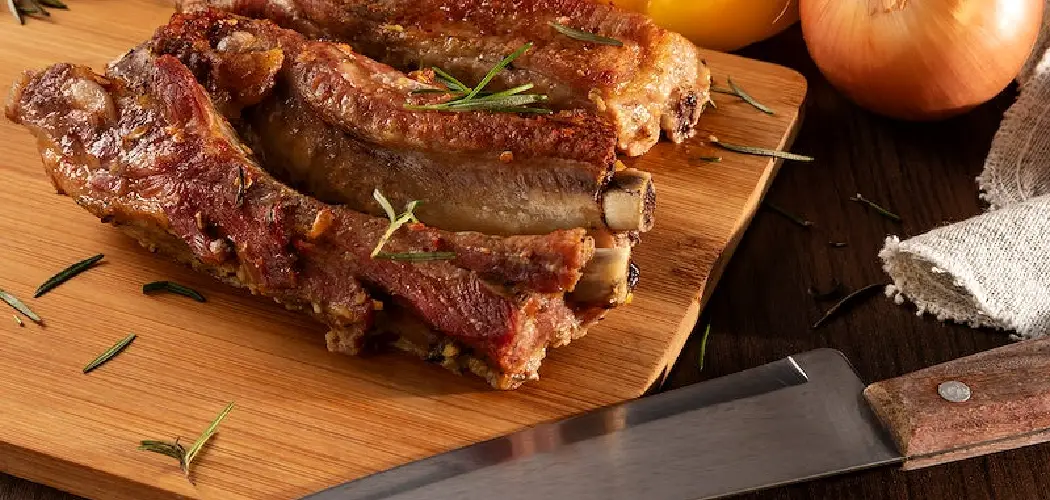When it comes to charcuterie boards, how thick should they be? Some people believe that a board that is too thin won’t be able to support the weight of the meats and cheeses. On the other hand, others think that a thicker board will make the presentation look too heavy. So, what’s the right answer? Read on to find out more about how thick are charcuterie boards.
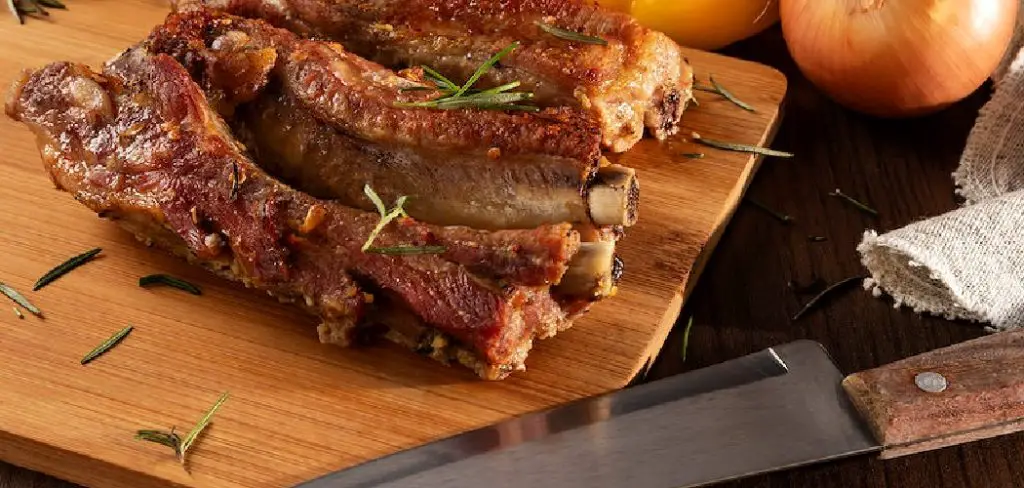
What Are Charcuterie Boards?
A charcuterie board is a type of food presentation that typically features a variety of cured meats, cheeses, and other savory snacks. The word “charcuterie” comes from the French term for smoked, cured, or otherwise seasoned meat products, and these boards are often served as appetizers or light meals.
While charcuterie boards can be customized to suit any taste, they typically include a variety of textures and flavors to please a range of palates. For example, meats may include sliced salami or chorizo, while cheeses might include sharp cheddar or creamy brie. Crackers, bread, nuts, and fruits are also common additions to these boards.
With so many delicious options to choose from, it’s no wonder that charcuterie boards have become a popular party snack in recent years.
Why Thickness Matters
When it comes to charcuterie boards, the thickness of the board can make a big difference in both aesthetics and functionality. Here are some factors to consider:
Weight:
As mentioned earlier, a thicker board may be better able to support the weight of various meats and cheeses without bending or breaking.
Durability:
A thicker board is also less likely to warp or crack over time, making it a more durable choice for long-term use.
Presentation:
On the other hand, a thinner board may provide a sleeker and more elegant look for your charcuterie display. It can also be easier to cut and maneuver different items on a thin surface.
10 Tips to Determine How Thick Are Charcuterie Boards
1. Check the Thickness of The Wood
The first step is to check the thickness of the wood. You want to ensure that the charcuterie board is thick enough to support all of the items you plan on putting on it. If you are unsure, you can always ask a salesperson or someone at the store. They may be able to provide you with recommendations based on your specific needs. The thickness of the board can range from ½ inch to 1 inch, depending on your preference.
You also want to make sure that the wood is of good quality and has been properly cured to avoid warping or cracking. It’s best to choose a hardwood such as maple, walnut, or cherry for durability.
2. Inspect How Big the Charcuterie Board Is
The next thing you need to do is inspect how big the charcuterie board is. This will allow you to figure out how many pieces of meat and cheese you need to buy.
It’s a good idea to overestimate how much you’ll need because you can always save the leftovers for another meal. Also, charcuterie boards come in all shapes and sizes, so make sure you measure before you start shopping.
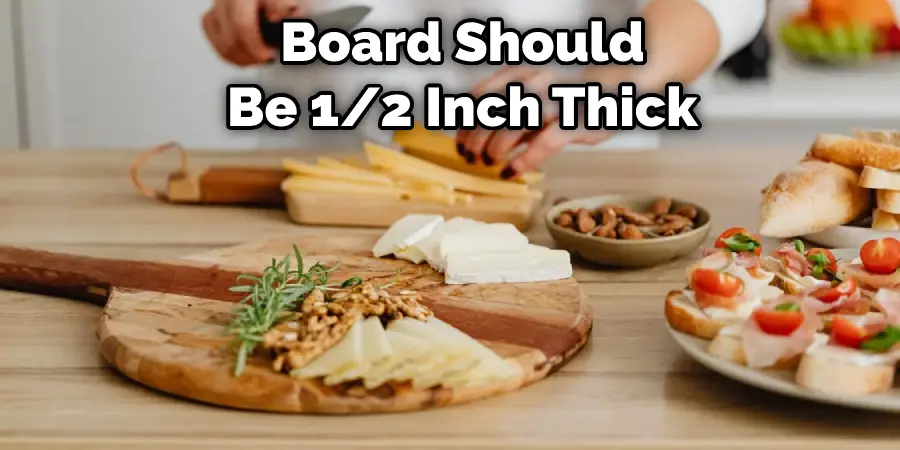
3. Consider How Many Items Will Be on The Board
Another thing to consider is how many items will be on the board. For example, you will need a thicker board if you plan on having a lot of food. A good rule of thumb is that the board should be 1/2 inch thick for every five items that will be on the board. So, if you plan on having 20 items on the board, you will need a 2-inch thick board.
You also want to make sure that the board is large enough to fit all of your items comfortably without feeling overcrowded.
4. Think About How Heavy the Board Needs to Be
Another thing to think about is how heavy the board needs to be. If you are planning on serving a lot of food, you will need a sturdy board that can handle the weight. You don’t want the board to collapse under the pressure! It’s important to choose a wood that is both thick and dense, such as maple or walnut. The weight of the board can also affect its portability, so keep that in mind if you plan on bringing your charcuterie board to a party or event.
You can also consider adding feet or handles to the board for easier handling and transport. The thickness and weight of the board should be balanced for both functionality and aesthetics.
5. Determine What Type of Wood You Want to Use
The next step is determining the wood you want to use for your charcuterie board. There are a variety of woods that can be used, but the most common are maple, cherry, and walnut. Each type of wood has its own unique grain pattern and color, so you’ll want to choose the one that best fits your style.
You may also want to consider the maintenance required for each type of wood. For example, cherry wood will require regular oiling to maintain its color and prevent cracking.
6. Choose the Right Size for Your Charcuterie Board
Once you have determined what wood you want to use for your charcuterie board, the next step is selecting the right size. Charcuterie boards come in all shapes and sizes, so choosing one that will fit your needs is important.
A larger board will be ideal if you plan on using it for entertaining. But a smaller board would be better suited if you’re looking for a more intimate dining experience.
7. Make Sure the Board Is Durable and Sturdy
The last thing you want to do is make sure that the board is durable and sturdy. There are a lot of different materials that charcuterie boards can be made of, but the best ones are usually made of wood. You want to ensure that the board won’t crack or break easily and that it will last many years.
That’s it! You’ve now learned how to determine how thick are charcuterie boards. Use these tips to make sure that you choose the right board for your needs. Consider the Occasion and Presentation
8. Consider the Occasion
When choosing a charcuterie board, it’s important to consider the occasion for which you will be using it. If you are hosting a formal dinner party, you may want to opt for a more elegant and refined board with intricate designs or engravings.
On the other hand, if you are planning a casual gathering with friends, a simpler and more rustic board may be a better fit. Keep in mind the overall vibe of your event when choosing the thickness and design of your charcuterie board.
9. Think About Presentation
Presentation is key when it comes to charcuterie boards, as they are often used as a centerpiece for gatherings or parties. A thicker board can provide a more substantial and impressive appearance, perfect for showcasing an array of delicious meats, cheeses, fruits, and other accompaniments.
However, a thinner board can also offer a sleek and modern presentation, especially when paired with unique serving platters or boards. Consider the overall aesthetic you want to achieve with your charcuterie board when deciding on its thickness.
10. Experiment with Different Thicknesses
Don’t be afraid to experiment with different thicknesses of charcuterie boards! While there are guidelines for how thick a board should be based on the number of items you plan on serving, ultimately, it comes down to personal preference and what works best for your specific needs.
Try using thinner boards for smaller gatherings or more intimate settings, and thicker boards for larger events or when serving a wide variety of items. You may find that different thicknesses work better for different occasions, so don’t be afraid to mix it up and see what works best for you. Happy entertaining!
How To Create The Perfect Charcuterie Board
A charcuterie board is perfect for impressing your guests with a delicious and beautiful display of meats, cheeses, fruits, and veggies. Here are a few tips on how to create the perfect charcuterie board:
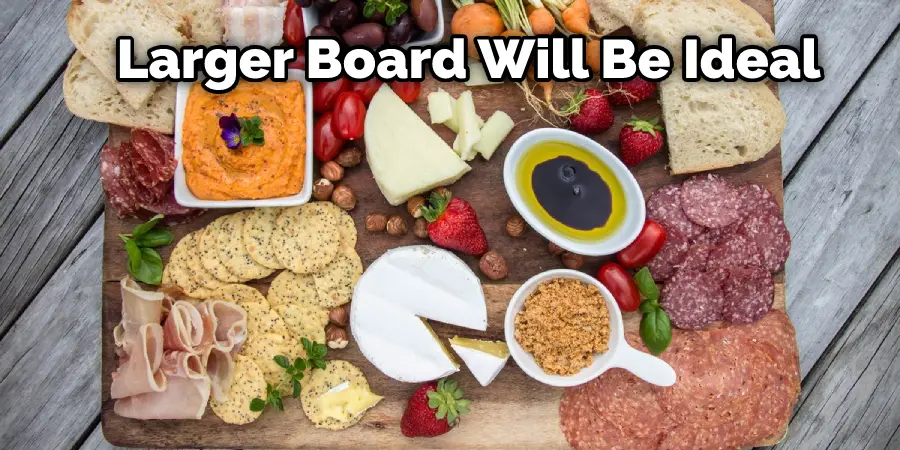
-Choose an assortment of meats, cheeses, and fruits that will please everyone’s palate.
-Arrange the meats, cheeses, and fruits on the board aesthetically pleasingly.
-Make sure to include a variety of colors, textures, and flavors.
-Provide a selection of crackers and bread for your guests to enjoy.
-don’t forget the basics: knives, plates, and napkins!
With these tips in mind, you’re sure to create a charcuterie board that will be a hit at any party or gathering. So get creative and enjoy!
What Makes A Good Charcuterie Board
A charcuterie board is more than just a collection of cured meats and cheeses – it’s a work of art. The key to creating a truly beautiful and tempting charcuterie board is balance. A good charcuterie board will have a variety of colors, textures, and flavors. It should also include familiar and exotic items, allowing guests to explore new tastes while enjoying old favorites.
And of course, a charcuterie board is not complete without a delicious accompaniment, such as fresh bread or fruit. With a little creativity, you can create a charcuterie board that is sure to impress your guests.
How to Choose the Right Charcuterie Board for Your Needs
When it comes to hosting a party, few things are more impressive than a well-stocked charcuterie board. Whether you’re hosting a casual get-together or an elegant soirée, a charcuterie board can help you take your event to the next level.
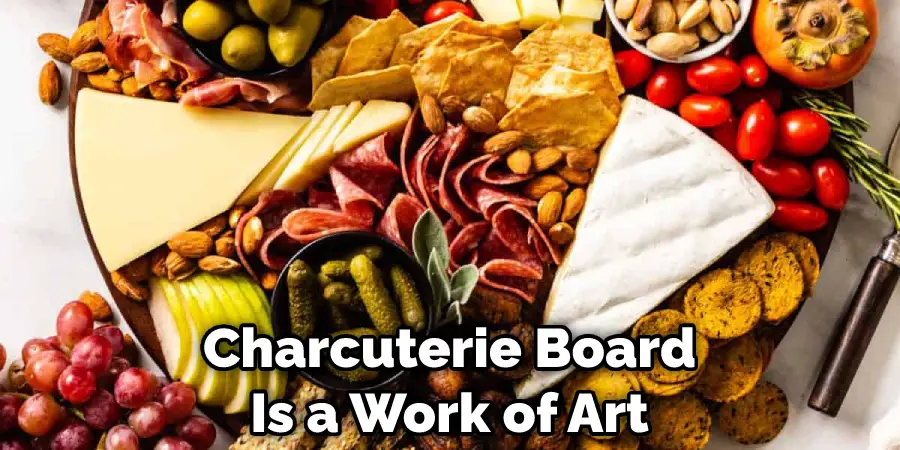
But with so many different types of boards available, how do you know which one is right for you? Here are a few tips to help you choose the perfect charcuterie board for your next event.
First, consider the size of your event. A smaller board will suffice if you’re only expecting a few people. But if you’re planning on feeding a large crowd, you’ll need a larger board that can accommodate a variety of meats and cheeses.
Second, think about the type of event you’re hosting. A casual backyard barbecue would be well-suited for a rustic wooden Board, while a more formal affair would call for a sleek and modern acrylic Board.
Finally, don’t forget to factor in your budget. Charcuterie boards can range in price from relatively affordable to quite costly, so be sure to choose one that fits within your budget.
By following these simple tips, you can be sure to choose the perfect charcuterie board for your next event. Keep reading for more information about how thick are charcuterie boards.
The Perfect Thickness for A Charcuterie Board
When it comes to hosting the perfect charcuterie board, thickness is key. Slices that are too thick will be difficult to eat, while slices that are too thin will lack flavor. The ideal thickness for charcuterie is between 1/8 and 1/4 of an inch. This allows for a balance between flavor and ease of eating.
When slicing your own charcuterie, a sharp knife is essential. A dull knife will crush the meat, making it more difficult to achieve the desired thickness. If you’re not confident in your slicing skills, it’s best to avoid caution and go for slightly thicker slices.
With a little practice, you’ll be able to master the art of charcuterie slicing in no time.
What Goes Well on a Charcuterie Board?
A charcuterie board is a perfect way to show off your culinary skills and impress your guests. But what should you put on your charcuterie board? The options are endless, but there are a few key ingredients that will help to make your board shine.
First, choose a variety of meats, such as salami, prosciutto, and chorizo. Next, add some cheeses, such as cheddar, brie, and goat cheese. Then, add some fruits and vegetables, such as grapes, strawberries, and carrots. Finally, don’t forget the crackers and bread!
With these key ingredients, you’ll be sure to create a charcuterie board that will be the talk of the party.
Why Are Charcuterie Boards Different Thicknesses?
There are a few reasons why you might want to choose a board with different thicknesses. For one thing, it can add visual interest to your charcuterie spread. It can also be helpful if you plan to serve a variety of meats and cheeses, as it can give you more versatility in terms of portion size.
Additionally, boards with different thicknesses tend to be more durable and withstand repeated use. Ultimately, the best reason to choose a charcuterie board with different thicknesses is that it allows you to customize your experience.
Whether you’re looking for a more intimate gathering or a fun party platter, a board with different thicknesses can help you create the perfect charcuterie spread.
Frequently Asked Questions:
Q: Can I Use a Wooden Board for My Charcuterie?
A: Yes, wooden boards are a popular choice for charcuterie as they add a rustic charm to your display and are generally more affordable than other materials. The key is to make sure the board is food-safe and has been properly cleaned before use. You can also opt for other materials such as slate or marble, for a more elegant look.
Q: How Many Types of Meats and Cheeses Should I Include on My Charcuterie Board?
A: It’s best to include a variety of meats and cheeses to cater to different tastes. A general rule is to have at least three types of meats and three types of cheeses but feel free to add more depending on the size of your board and the number of guests. You can also mix up the types of meats and cheeses, such as including one hard cheese, one soft cheese, and one blue cheese.
Q: Can I Create a Vegetarian Charcuterie Board?
A: Yes, you can absolutely create a vegetarian charcuterie board by including a variety of fruits, vegetables, crackers, dips, and nuts. You can also add some plant-based alternative meats and cheeses for more options. Be sure to keep any non-vegetarian items separate to avoid cross-contamination.
Q: How Far in Advance Can I Prepare My Charcuterie Board?
A: It’s best to prepare your charcuterie board as close to serving time as possible, but you can start prepping some items a day in advance. Meats and cheeses can be sliced and stored in the fridge, while fruits and vegetables should be washed and cut on the day of the event. You can also assemble non-perishable items, such as crackers and nuts, a few hours in advance.
Q: Are There Any Tips for Presenting My Charcuterie Board?
A: Presentation is key when it comes to charcuterie boards. To make your board more visually appealing, try arranging items in groups rather than spreading them out randomly. You can also use different heights by propping up items like crackers or grapes on small jars or bowls. And don’t be afraid to get creative with garnishes and decorations, such as rosemary sprigs or edible flowers.
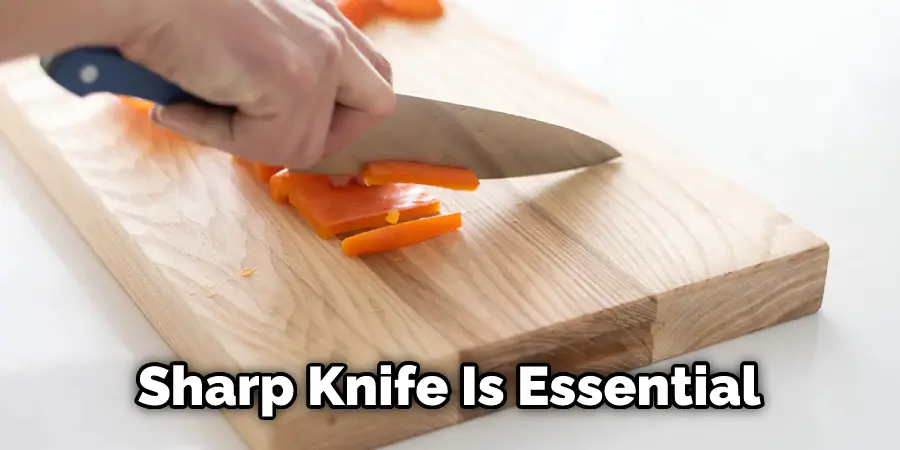
Conclusion
So, there you have it. Everything you need to know about charcuterie boards. They are perfect for showing off your culinary skills and impressing your guests. Not only do they look impressive, but they also taste great.
So, be sure to try out one of our recipes or come up with your own variation. We can’t wait to see what you come up with! Thanks for reading our post about how thick are charcuterie boards.
You Can Check It Out To Do You Make Bean Bag Boards Less Slippery

